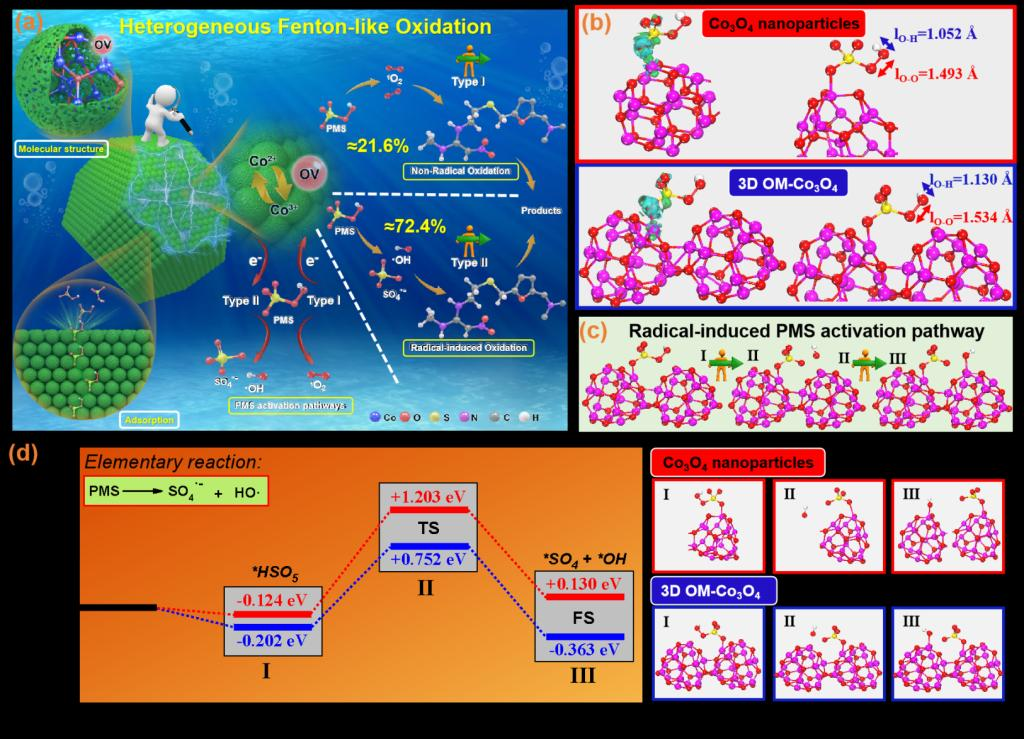Professor Wang Hongjie's Team in the School of Ecology and Environment..
Recently, a young faculty member of Prof. Wang Hongjie’s team in the School of Ecology and Environment (Prepared), Ma Yiyang (University-appointed Professor), in collaboration with the research team of Associate Professor Zhang Zhenghua from Tsinghua University, published their original research results in the field of environmental functional materials in Chemical Engineering Journal (CAS I top, IF=13.273), a well-known journal in engineering technology. In this study, the ordered arrangement of Co3O4 nanoparticles was achieved with a KIT-6 sacrificial template, and a novel method for enhancing the synergistic effect between nanoparticles was proposed.
In recent years, pharmaceuticals and personal care products (PPCPs) have posed a serious threat to human and wildlife health, and many types of PPCPs have been detected in water samples. Heterogeneous Fenton-like oxidation technology has become an important method for the treatment of these new pollutants due to its simplicity of operation, high efficiency, and lack of secondary contamination. In the article, density function theory (DFT) calculations confirm that the ordered Co3O4 nanoparticles have stronger adsorption energy and lower activation energy barrier for the target pollutant molecules. Electron paramagnetic resonance (EPR) technique also reveals that the structure control method contributes to the generation of singlet oxygen in the system, and more importantly, activates multiple oxidation mechanisms to coexist in the degradation process of dimethylamine PPCPs.

Fig. 1 Schematic diagram of three-dimensional mesoporous Co3O4 nanoparticles for confined catalysis of peroxymonosulfate.
Related results were published in Chemical Engineering Journal (DOI:10.1016/ j.cej.2022.136495) with Hebei University as the first unit, and the research was supported by the National Natural Science Foundation of China under the host of Ma Yiyang.
For the article, please refer to https://doi.c/10.1016/j.cej.2022.136495